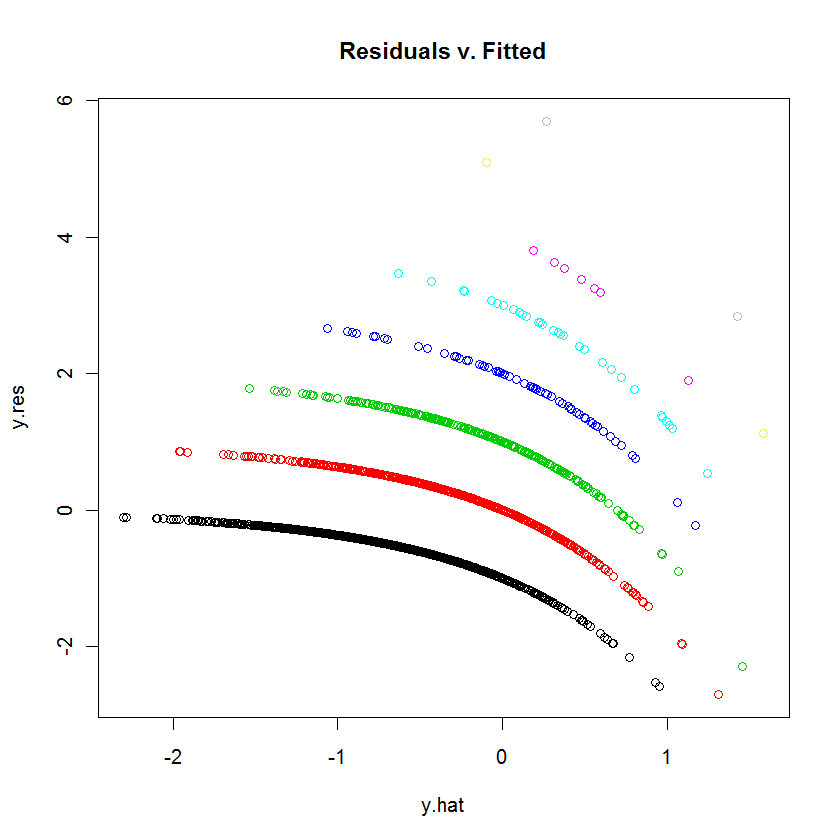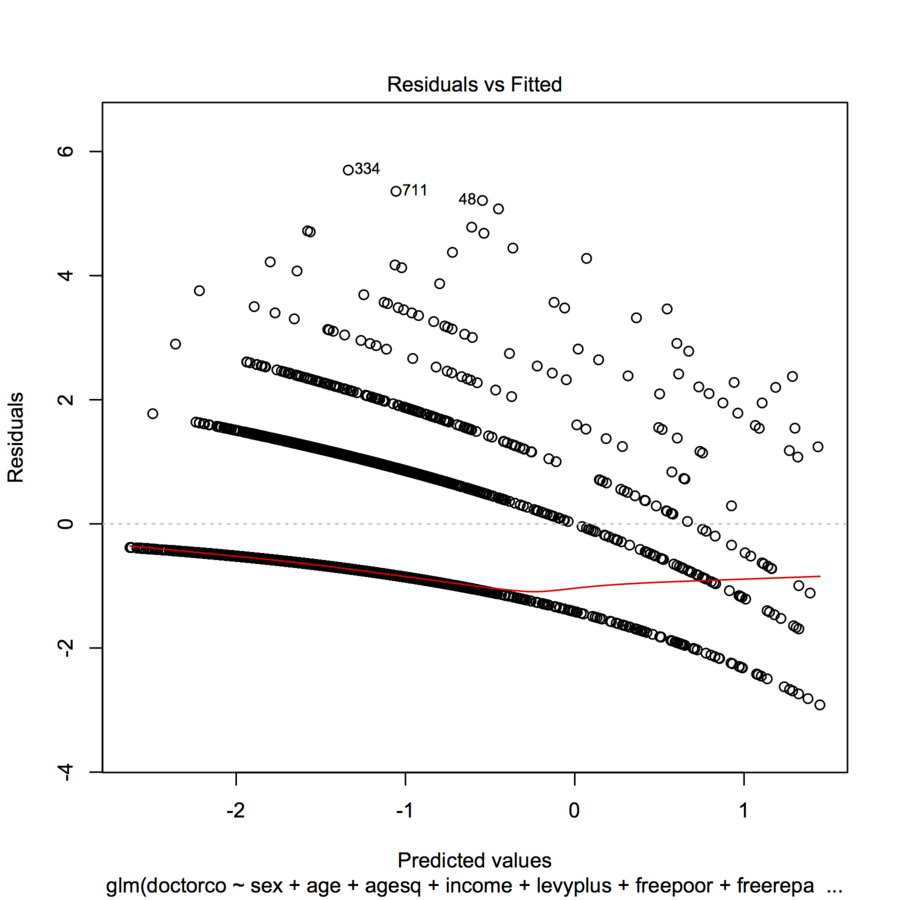This is the appearance you expect of such a plot when the dependent variable is discrete.
Each curvilinear trace of points on the plot corresponds to a fixed value $k$ of the dependent variable $y$. Every case where $y=k$ has a prediction $\hat{y}$; its residual--by definition--equals $k-\hat{y}$. The plot of $k-\hat{y}$ versus $\hat{y}$ is obviously a line with slope $-1$. In Poisson regression, the x-axis is shown on a log scale: it is $\log(\hat{y})$. The curves now bend down exponentially. As $k$ varies, these curves rise by integral amounts. Exponentiating them gives a set of quasi-parallel curves. (To prove this, the plot will be explicitly constructed below, separately coloring the points by the values of $y$.)
We can reproduce the plot in question quite closely by means of a similar but arbitrary model (using small random coefficients):
# Create random data for a random model.
set.seed(17)
n <- 2^12 # Number of cases
k <- 12 # Number of variables
beta = rnorm(k, sd=0.2) # Model coefficients
x <- matrix(rnorm(n*k), ncol=k) # Independent values
y <- rpois(n, lambda=exp(-0.5 + x %*% beta + 0.1*rnorm(n)))
# Wrap the data into a data frame, create a formula, and run the model.
df <- data.frame(cbind(y,x))
s.formula <- apply(matrix(1:k, nrow=1), 1, function(i) paste("V", i+1, sep=""))
s.formula <- paste("y ~", paste(s.formula, collapse="+"))
modl <- glm(as.formula(s.formula), family=poisson, data=df)
# Construct a residual vs. prediction plot.
b <- coefficients(modl)
y.hat <- x %*% b[-1] + b[1] # *Logs* of the predicted values
y.res <- y - exp(y.hat) # Residuals
colors <- 1:(max(y)+1) # One color for each possible value of y
plot(y.hat, y.res, col=colors[y+1], main="Residuals v. Fitted")




homeworksince you talked about an assignment. $\endgroup$table(dvisits$doctorco). What do the 10 curved lines on your plot correspond to, in this table? Also, with in excess of 5000 observations, don't worry too much about fitting 13 regression coefficients. $\endgroup$